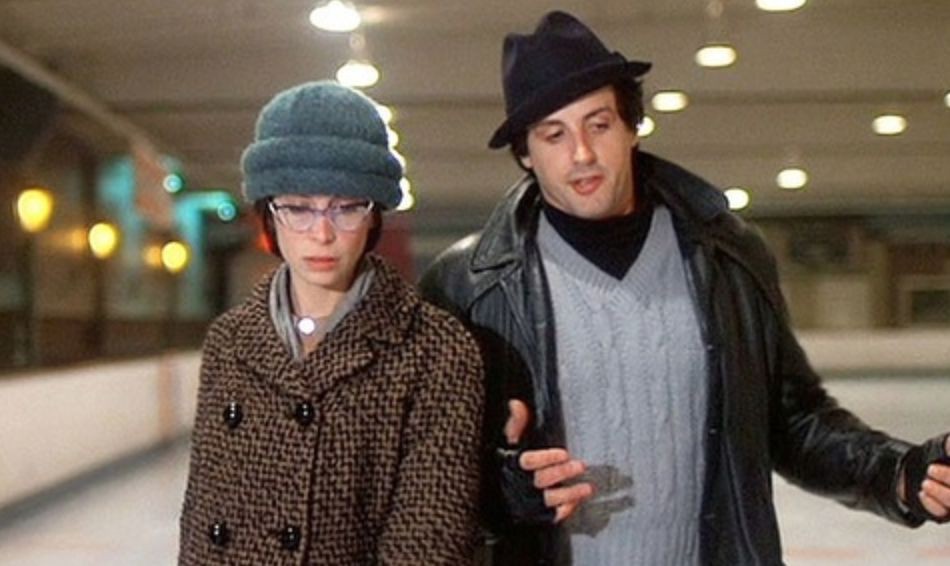The AFI top 100 list may be one of the most daunting film lists that exists. The 100 best American movies. Well, at least the 100 best according to a group of people who worked in the film industry in 2007. Still, after thousands of great movies have been made, it’s not too shabby to wind up on this list.
Right now a podcast called Unspooled is happening, where Paul Sheer (The League, How Did This Get Made) and film critic Amy Nicholson analyze a movie from the AFI list every week, each pick decided by the roll of a 100-sided die.
It’s an engaging podcast, especially since it comes with the homework of watching one of these hundred greatest movies.
And it brings up a couple questions: Why are these movies considered to be so good? And what can those who want to create their own creative work--whether it be a movie, a TV show, some kind of impromptu performance art--learn from these top movies?
The podcast does a great job at answering that first question, but I wanted to hit the second.* So consider this an unofficial companion piece, or at least some sort of separate analysis of all the movies on the list that happen to line up with their list (they’re currently 29 movies in, so I will have to backtrack whenever I can to cover the prior picks). I know this is an ambitious task in it’s length, not unlike Sufjan Steven’s project where he was going to make 50 concept albums, each about a different U.S. state, and then he gave up after two; however, I think this can be done. At least eventually.
For each movie, I plan to cover two main areas. One is the underlying theme of the movie. This is the statement that the movie is making or the question that it’s asking. This is maybe the most important aspect of any movie since it’s what holds the movie together. It might be something most people don’t realize consciously, but it’s what creates that “intangible great” in a film and makes it feel like a complete piece rather than just a bunch of stuff that happens. Great movies have it, and it’s what separates them from more mehhhh sort of movies.
I’ll also be looking at specific other techniques each movie does well and what we can learn from them.
You don’t have to listen to the podcast or even watch the movie to get something from this,but I recommend both.
So let’s get started with our first one, the 1976 original Rocky, directed by John G Avildsen and written by Sylvester Stalone.
*If you’ve asked the reasonable “how the hell is this guy qualified to talk about these things,” I’ll throw out a few credentials. I have a Masters in creative writing, I also majored in film, I’ve taught college courses on these topics, and, most importantly I think about and study these things far too much.
Pushing to potential
This first one we’re doing is an interesting one because in many ways it’s a genre movie, specifically a sports one. It’s centered around an athlete. We see a training montage (the most famous training montage ever). The climatic scene of the movie is a sports scene.
But also it’s not a genre movie, and the ways that it’s not is the most interesting. The movie constantly says that it’s more than just a sports movie. Things like spending so much time on character building and the Rocky-Adrian relationship are clear indicators of this, but having Rocky lose the big fight at the end, which they just as easily could have had him win, clearly states that it’s not what the movie is about.
So the underlying theme of this movie, the thing that all the other details of this movie points back to is “You have to push yourself to reach your full potential.”
This is true of Rocky the character. He’s shown to be a great guy, but he is not living his life to his full potential. He is lonely, he has a job breaking legs that he doesn’t want to do, he fights fights that don’t matter and where he gets yelled at. Even Mickey tells him “You had the talent to become a good fighter, but instead of that, you become a legbreaker to some cheap, second rate loanshark!” When he gets that opportunity to have a huge fight, he has to constantly push himself past his breaking point with his training, and he has to push against himself at the moments when he wants to give up and not fight.
He tells Adrian that he doesn’t care about winning, which is something different from any other sports movie. He just wants to go the distance with Apollo Creed, an intrinsic reward. The belt doesn’t matter to him, he just wants to be someone. He wants to no longer be that bum people call him and that he believes he is.
Adrian has the same arc in the movie. She began completely passive, letting her brother abuse her. She wanted to not be seen by the world because being seen was way too scary. But as soon as she started to push herself to get past that, she had the courage to have the kind of relationship she wanted to have, and she finally stood up to her brother.
Even Apollo experiences this, as he has become such a good boxer that he’s become complacent. When he fights Rocky, he has to push himself too. So much so that he tells Rocky, “Ain’t going to be no rematch.”
America the beautiful
Apollo--Now that’s the way I see it, and that’s the way it’s going to be.
Jergens--Apollo, I like it. It’s very American.
Apollo--No, Jergens, it’s very smart.
The idea of America is huge in this movie. This is because the ideal of America, one that’s built out of optimistic ambition, perfectly lines up with the theme of the movie. It’s the ultimate ideal for the underdog who wants to succeed.
Apollo Creed understands this as he once was the underdog too. He knows the most American thing would be for the underdog to win, which is why he’d much rather be smart.
But the other side of America is also represented here. The rich get richer, poor get prison, punch you in the dick side.
Apollo is such a force to be reckoned with that he represents this part of the US too (as he once represented the ideal). Dressed head to toe in American flag gear, when Rocky is fighting him, he’s very clearly fighting in a boxing match against the powerhouse of America. And when you’re in that kind of battle, it doesn’t really matter if you’re wearing white boxing trunks with a little red or red boxing trunks with a little white.
What you can learn
Defining the most unique take-aways from Rocky can be difficult because this movie has been copied so many times. Parts of this movie that you could have pointed to as innovative have become cliche after so much copy and pasting into other screenplays.
What we can look at though is the timeless things that this movie does right. These are things that could be done again and again a hundred times and they would still work.
Interesting character development
We love Rocky, and we love him right away.
The movie spends A LOT of time developing the character, and every development makes us like him a little more. We see him talking to his fish, making him seem fun yet lonely. We see him refusing to break a guy’s thumbs, making him seem compassionate. We see him giving smug advice, getting told off, and then being self-deprecating, making him seem all-so-human.
By the time he gets told that he’s going to fight Apollo Creed, which is halfway into the movie, we are on the guy’s side.
The same could be said of Adrian. We see how scared she is of the outside world and we get glimpses into how caring she is (making food for her brother). When she starts to express herself, entering the relationship with Rocky, we’re rooting for her too.
The movie takes its time with these characterizations, unlike most movies that try to race to the plot, and it really pays off since it creates some of the most memorable characters in movie history.
Set-up and payoff
What makes a really tight screenplay?
One with no wasted moves.
Everything serves a purpose. We get a piece of information at some point, and learning that piece of information rewards us later on, whether that reward is advancing the plot or it’s creating more emotion.
Rocky is full of these.
One setup we get is when Rocky brags to Adrian that he never had his nose broken before. He tells her that it’s a point of pride that so many people have tried, but no one has been able to do it.
Then when he’s in the fight, Apollo lands a hook to Rocky’s face, breaking his nose. Not only is it the other shoe dropping, but it seamlessly creates a lot of tension. This nose breaking is a shorthand way of telling us that Rocky is facing an opponent tougher than any he’s ever faced. And that adds a lot of tension to the scene right when it is most needed.
A romance we care about
There’s a lot of theorizing that a screenplay has two storylines: the A story and the B story. Usually the A story is the main plot of the film, and the B story is the romance that’s thrown in because...well because movies almost always feel they have to.
Due to this subordination of the B storyline, it often feels so tacked on. Main characters saves the world. And, oh yeah, he also gets the girl. Checkmark hit.
Rocky does not play with this level of superficiality. The relationship doesn’t mean anything less than the boxing plot. In fact, it might even mean more.
The first half of the movie is completely dedicated to this romance. We learn a lot more about his relationship to Adrian than we do to his relationship with Apollo or even with Mickey.
In the last scene of the movie, Rocky doesn’t even care about the results of fight and neither does the movie really. All he cares about is being with Adrian. And when the two of them hug, the movie ends on that shot. You potentially call this movie a romance disguised as a sports film.
It is a bit fitting that Rocky is the first movie that we look at. The lesson from it is very similar to the lesson we get when trying to make film projects or we try to get a book sold.
We have to push through all the adversity in order to reach our full potential and get something made. It might seem sometimes like we’re facing an insurmountable giant; however, if we keep on persevering, then we just might go the distance.
Thanks for reading! If you liked this, please join our mailing list: https://www.candivan.com/subscribe/





